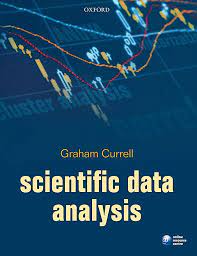The Fascinating World of Scientific Data Analysis
Scientific data analysis plays a crucial role in modern research across various disciplines, from physics and biology to social sciences and beyond. It involves the process of collecting, cleaning, transforming, and interpreting data to extract meaningful insights and make informed decisions.
One of the key aspects of scientific data analysis is the use of statistical methods to identify patterns, trends, and relationships within the data. This allows researchers to draw conclusions, test hypotheses, and validate theories based on empirical evidence.
Advancements in technology have revolutionised the field of scientific data analysis, enabling researchers to handle vast amounts of data with greater speed and accuracy. Techniques such as machine learning and artificial intelligence have opened up new possibilities for analysing complex datasets and predicting future outcomes.
Effective data visualisation is another essential component of scientific data analysis. By presenting data in visual formats such as charts, graphs, and maps, researchers can communicate their findings more clearly and engage a wider audience.
Furthermore, ethical considerations are paramount in scientific data analysis. Researchers must ensure the privacy and confidentiality of individuals’ data, adhere to ethical guidelines and standards, and maintain transparency in their methodologies and findings.
In conclusion, scientific data analysis is a dynamic and interdisciplinary field that continues to evolve with technological advancements and research breakthroughs. By harnessing the power of data analytics, researchers can unlock new insights into the natural world, human behaviour, and societal trends.
Six Essential Tips for Effective Scientific Data Analysis: Ensuring Quality, Appropriate Statistics, Visualisation, Documentation, Assumption Review, and Peer Validation
- Ensure data quality by checking for errors and outliers.
- Use appropriate statistical methods to analyse the data.
- Visualise the data using graphs and charts for better understanding.
- Document your analysis process and results for reproducibility.
- Consider the assumptions underlying your analysis techniques.
- Seek feedback from peers or experts to validate your findings.
Ensure data quality by checking for errors and outliers.
Ensuring data quality is essential in scientific data analysis to maintain the accuracy and reliability of research findings. One crucial tip is to meticulously check for errors and outliers within the dataset. By identifying and addressing any inconsistencies or anomalies, researchers can prevent skewed results and erroneous conclusions. This process involves thorough data validation, outlier detection techniques, and data cleaning procedures to enhance the integrity of the analysis. By prioritising data quality control measures, researchers can uphold the credibility of their research outcomes and facilitate more robust scientific discoveries.
Use appropriate statistical methods to analyse the data.
When conducting scientific data analysis, it is essential to use appropriate statistical methods to analyse the data effectively. By selecting the right statistical techniques, researchers can uncover meaningful patterns, relationships, and insights within the data. Choosing the correct method ensures that the conclusions drawn from the analysis are accurate and reliable, leading to robust research findings and informed decision-making. Whether it involves hypothesis testing, regression analysis, or data mining, applying suitable statistical methods is crucial for deriving valuable information from complex datasets in various scientific disciplines.
Visualise the data using graphs and charts for better understanding.
Visualising data through graphs and charts is a valuable tip in scientific data analysis. By presenting data visually, researchers can easily identify patterns, trends, and relationships that may not be apparent from raw numbers alone. Graphs and charts provide a clear and concise way to communicate complex information, making it easier for both researchers and audiences to interpret and understand the data. This visual representation enhances the clarity and impact of the findings, enabling more effective decision-making and insightful analysis in various research fields.
Document your analysis process and results for reproducibility.
Documenting your analysis process and results is a crucial step in scientific data analysis to ensure reproducibility. By detailing the steps taken, methods used, and outcomes obtained during the analysis, researchers can provide transparency and clarity to their work. This documentation not only allows others to replicate the analysis and verify the results but also helps in building upon existing research and fostering collaboration within the scientific community. Ultimately, documenting the analysis process enhances the credibility and reliability of research findings, contributing to the advancement of knowledge in various fields of study.
Consider the assumptions underlying your analysis techniques.
When conducting scientific data analysis, it is essential to consider the assumptions that underlie your chosen analysis techniques. These assumptions can significantly impact the validity and reliability of your results. By critically evaluating the assumptions inherent in your analytical methods, you can ensure that your findings are robust and accurately reflect the underlying data. Being aware of these assumptions allows researchers to make informed decisions about the suitability of their chosen techniques and interpret their results with greater confidence and accuracy.
Seek feedback from peers or experts to validate your findings.
Seeking feedback from peers or experts is a crucial step in the process of scientific data analysis. By sharing your findings with others in the field, you can gain valuable insights, perspectives, and constructive criticism that can help validate your conclusions and strengthen the credibility of your research. Peer review not only helps to identify potential errors or biases in your analysis but also encourages collaboration and fosters a culture of transparency and accountability in scientific inquiry. Embracing feedback from peers or experts ensures that your conclusions are robust, reliable, and contribute meaningfully to the advancement of knowledge in your field.

No Responses